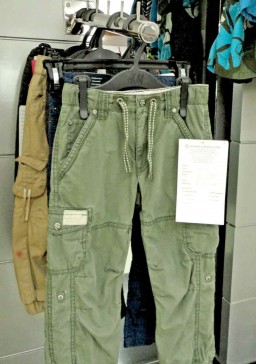Under the Consumer Product Safety Improvement Act of 2008, manufacturers of children’s products subject to an applicable safety rule must submit samples to a CPSC-accepted third-party conformity assessment body for testing and, based on those tests, issue a certificate that such product is in compliance with the applicable rule. Realizing that these testing costs are now getting exorbitant, the CPSC has made recommendations for lowering the costs of this testing, the same is scheduled to be discussed and voted on Oct. 3.
Though the list is not exhaustive as of now the suggestion includes the following:
-

Kidswear attracts high testing cost because of focus on safety. CPSC is seeking to reduce these costs. Develop information and education programs to increase understanding of the rules and their applicability, which could give rise to opportunities for using the same component part test results across many products or avoiding instances of redundant testing.
- Consider creating, maintaining and recognizing a list of equivalent tests in international standards, conformity to which would be indicative of conformity to the corresponding test in a CPSC-administered children’s product safety rule.
- Research the feasibility of developing a list of materials determined not to contain antimony, arsenic, barium, cadmium, chromium, lead, mercury, selenium or prohibited phthalates, which would not be subject to third-party testing.
- Investigate whether fourier transform infrared spectroscopy can be effective as a screening technology for determining that a plastic component part contains no phthalates.
- Consider an option in which a periodic testing interval based on low production volume would be allowed in addition to a time period, including whether some products should be excluded from such an option.
- Evaluate whether accreditation bodies other than ILAC-MRA signatories should be allowed to accredit testing labs to test children’s products for certification purposes.
- Consider whether certification bodies accredited to the upcoming standard ISO/IEC 17065 could have their accreditation accepted for children’s product certification purposes.
- Evaluate the issues regarding determining de minimis levels of paint and plasticized materials that would not require third-party testing and recommend changes to the applicable regulations as warranted.
- Investigate whether the adhesives used in manufactured woods can be determined not to contain lead in amounts above 100 parts per million (PPM).
- Investigate whether the process by which materials are determined not to contain lead in amounts above 100 PPM can be expanded to include synthetic food additives.
- Consider clarifying that manufacturers who do not conduct periodic testing (e.g., importers or manufacturers with short production runs) are not required to create a periodic testing plan.
- Determine whether it is feasible to vary a periodic test interval based on the risk of non-compliance.
- Explore the application of information technology to address the administrative costs involved with third-party testing.
- Seek legal authority from Congress to allow for certification of a manufacturing process to be an acceptable method of satisfying the third-party testing requirements.






